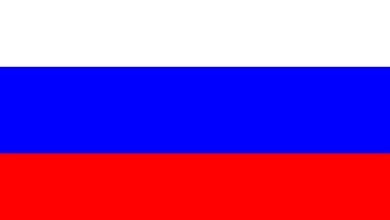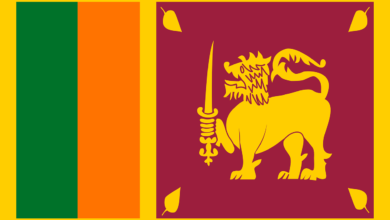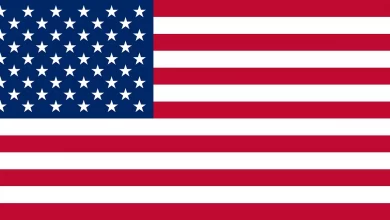Greenland, the world’s largest island, is an autonomous territory within the Kingdom of Denmark. It is known for its vast ice sheets, which cover about 80% of its surface and play a crucial role in global climate regulation. Despite its icy exterior, Greenland’s coastal areas experience relatively mild temperatures due to the warming effects of the Gulf Stream. The island’s sparse population primarily resides in coastal towns and settlements, with the capital, Nuuk, being the largest urban center. Greenland’s economy is largely driven by fishing, tourism, and increasing interest in its mineral resources. The island’s unique cultural heritage, blending indigenous Inuit traditions with Danish influences, adds to its distinct identity. As climate change accelerates, Greenland’s ice sheets are melting at an alarming rate, raising concerns about rising sea levels and global climate impacts.
- Greenland is the world’s largest island or an autonomous country within the kingdom of Denmark located between the Arctic and Atlantic oceans, east of the Canadian Arctic Archipelago.
- The nearest countries to Greenland are Canada to the west, Iceland to the southwest, southeast of the country is the Atlantic Ocean.
- A snowflake that falls on a glacier in central Greenland can take 200,000 years to reach the sea.
- Greenland is the least densely populated in the world, with density of 0.14 people per square sq km.
- The Greenland ice sheet is a massive body of ice covering about 1,710,000 square kilometers (660,000 sq mi), roughly 79% of the surface of Greenland. It is the second-largest ice body on the planet, after the Antarctic ice sheet.
- The oldest known ice in the current ice sheet is as much as 1 million years old.
- About 80% of the total land of Greenland is covered in ice.
- In some parts of the country, the warmest months’ highest temperature reaches 0 °C or 32 °F.
- In 2007 there were only 4,186 passenger cars in the country.
- The sun does not set from may 25 to July 25 and shine 24 hours a day.
- There are no interconnecting roads to the cities in the country. There are only a total of 150 km of roads in the whole country, and only 60 km of these are paved.
- In 1968 a B-52 plane carrying four nuclear warheads crashed into north star bay, Greenland.
- The country holds a large number of natural resources that include precious gemstones, zinc, lead, gold, iron ore, heavy and light earth elements, copper, and oil.
- In 1946 united states tried to purchase Greenland for $100 million in gold from Denmark, but the European Union refused to sell it to the Americans.
- In January 2020, the country recorded the lowest temperature in all of its history. The temperatures recorded were as low as -86.8° F (-66°C).
- The warmest temperature recorded ever since 1958 was 25.9°C which was recorded in the month of July 2013 in Manitsoq, which is situated at the western Greenland coast.
- The county has very little pollution and very little artificial lights compared to other parts of the world. So here you often see the clear sky and northern lights (aurora) very clear. The northern lights can be seen from the month of September to the beginning of April.
- Jakobshavn Isbrae is the biggest glacier in the country, which is along the western Greenland coast. It is also the fastest-flowing and largest ice losing glacier in Greenland.
- Kalaallit Nunaat is the other name of the country, which translates to ‘Land of the Greenlanders’.
- Mount Gunnbjörn is the highest mountain peak of the country as well as the highest in the northern arctic. It has an elevation of 3694 meters (12,119 ft).
- Greenland has one of the least forest area in the world. The total forest area in the country is only about 0.00054 %.
- Football is the national sport of Greenland and was introduced by danish settlers. However, because of the climatic conditions, Greenland is unable to support grass pitches, so soccer is played on the artificial turf.
- Dogs in the country are used for sled are also known as Greenland husky. They can reach up to 25 inches and can weigh 66 to 70 pounds.
- Greenland’s top exports are crustaceans ($542 million), non-fillet frozen fish ($498 million), processed crustaceans ($259 million), fish fillets ($121 million), and fish: dried, salted, smoked, or in brine ($21.3 million), with the majority exported to Denmark ($731 million), China ($353 million), the United Kingdom ($86 million), Japan ($77 million), and Chinese Taipei ($51.1 million).
- Greenland’s top imports are refined petroleum ($256 million), planes, helicopters, and/or spacecraft ($93.1 million), large construction vehicles ($18.4 million), iron toiletry ($14.8 million), and iron structures ($14 million), with the majority coming from Denmark ($587 million), Sweden ($230 million), France ($99.5 million), Iceland ($28.2 million), and Canada ($27.8 million).
- Greenland is the 2nd country in the world to have the least arable land with 0.57%.
- The average wage of Greenlanders is about $33,000.
- Nuuk Godthåb is the oldest city in Greenland which was founded on August 29, 1728.
- The oldest house in the country is Hans Egede house which was built in 1728.
- Canada is just 26 Km(15 miles) away from the Greenland border.
- According to a study published in 2020, the country has lost 3,902 gigatons (Gt) of ice between 1992 and 2018.
- The melting of Greenland ice has contributed to more than half an inch of global sea-level rise since 1972. If all the country’s ice melted, it would raise the sea levels by about 23 feet, which would submerge some coastal cities.
- Northeast Greenland National Park is the biggest national park on the entire planet. It covers an area of 972,000 square kilometers and has high arctic species of animals.
Quick Facts about Greenland
- CAPITAL CITY: Nuuk
- POPULATION: 56,661 (2022)
- POPULATION RANK: 206th
- LARGEST CITY: Nuuk
- OFFICIAL LANGUAGES: Greenlandic
- GDP NOMINAL: 3.236 billion USD (2021)
- GDP RANK: 152nd
- CURRENCY: Danish krone
- FOUNDED: 1 May 1979
- FATHER OF THE NATION: Erik the Red
- TOTAL AREA: 2.166 million km2
- AREA RANK: 13th worldwide
- CONTINENT: North America
- AVERAGE LIFE EXPECTANCY: 71.15 years (2021)
- ARMY STRENGTH: Nil
- ARMY RANK: Nil
- LITERACY RATE: 100%
- PER CAPITA INCOME: $57,116
References
- Britannica-Greenland
- Wikipedia-Greenland
- Quizzclub.com
- Climatestotravel.com
- Wikipedia-Thulle Air Base B-52 Crash
- Cnn.com(United states wanted to purchase greenland from denmark)
- Nsidc.org(total ice covered greenland)
- Iceagenow.info(lowest and warmest temperature ever recorded)
- Greenland-travel.com(Northern Lights)
- Tradingeconomics.com(greenland least forest country)
- Wikipedia-Greenland Dog
- Wikipedia-Greenland Ice Sheet
- Businessinsider.in(ice melted results and estimate if all ice melts)






